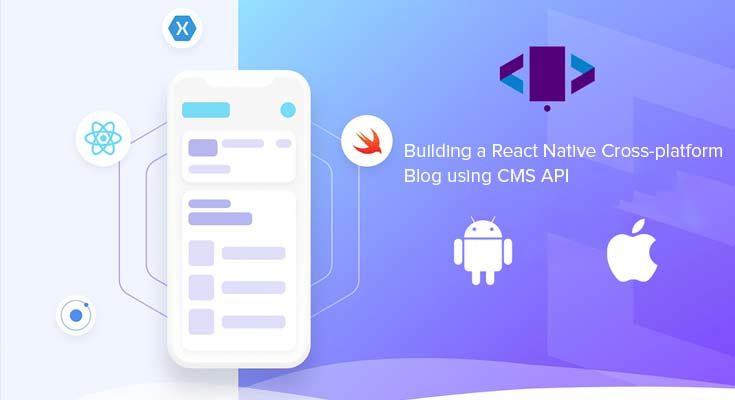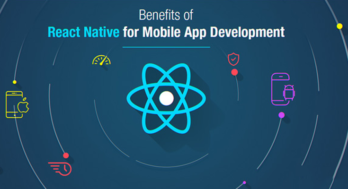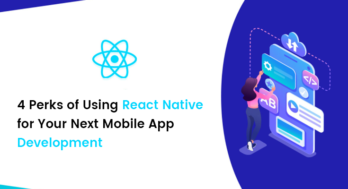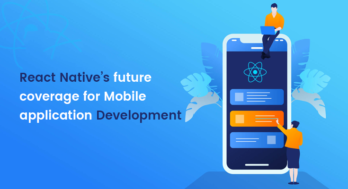In this article, you can expect to find details about how to build a React Native Cross-Platform Blog by using a Cosmic JS CLI. And, this has major benefits because today we live in a world which is linked with devices and out of which each is powered by their own software.
If you are still wondering what a Cosmic JS CMS API is?
Then, here is the answer to it.
Basically, a Cosmic CMS is a first cloud-based API. A content platform that not only creates the ease of adding content to an already existing website but also makes it seamless to deliver content across other platforms and devices.
As for any React Native Developer today, they get easy access to updating, editing, and delivering content, which is always the good part.
What are the Intriguing Features of a React Native Cross-Platform Blog?
Here are some of the best features of a React Native Cross-Platform Blog. See for yourself.
- The web is 100% responsive down to mobile with Bootstrap Front End.
- And, the images used with the content can be manipulated easily.
- The Native iOS, as well as Android Apps, have the same React Native codebase. So this makes it easy to learn and then write it.
- Automatic updates over the web, Android, and iOS.
- Easy break down of barriers between the devices and the programming languages.
All of the factors are worth everything, so you do not have to worry about how much does it cost to develop an app, amazing, right?
Why Use React Native and How does it Bridge Gap?
Developers would understand that React Native is a super powerful tool that is used to build applications over Operating systems such as iOS and Android. And, this is because of the single reason that react native happens to share codebase over both the platforms.
The best part is that you being a developer get to finish building your app is almost half the time. Even setting up the iOS development environment happens to be super easy. So, what else would you even need?
You can easily try and follow up with the commands, also ensure that you have downloaded Android Studio and get the correct version of the Java SDK installed so that you have all the React Native mobile development tools.
- Now, while developing if you take a quick look at the index,ios,js and index.android.js then you shall notice that roots for both the application (which is Android and iOS) runs at App.js.
- Moreover, even the other components such as the LandingPage.js, BlogList.js and BlogPost.js are same over both the platforms.
- While running the commands for React Native you will also notice that it just translates the Javascript building blocks into the native language for your preferred platform.
How can you process connecting to the CMS API?
In case, if you do not have an account till now, then you can easily sign up for the Cosmic JS then you can set up your bucket. The bucket can help you add and then edit your content across a cross-platform blog.
If you want to upload then go to demo content from the Cross-Platform blog on GitHub. The apps come with everything that you would require to get started with a typical website in its most basic form. And, the application here actually runs at an app-server.js.
Then proceed to ‘Bucket’ and then Import/Export. You now need to upload the bucket.json file which is placed in the root folder in the respiratory of the Cross-Platform Blog.
Now you can easily upload whichever demo data and files you want from the application. In order to configure your local applications just edit your ‘config file’ in both the native as well as the web folders.
Hence, now it is easy for you to edit content and automatically get it updated.
Let’s move Ahead – React Native Spotify Blog by Using a Headless CMS?
Now, this can be an exciting part for you, here we will be discussing – Quick starting React Native Blog by using the Cosmic CLI. Through this, you easily get to shuffle albums and even add homages of various artists based on the playlist. And, via Cosmic JS you can easily manage content and make your work look even better.
If you have a developer’s team, then through this you will be able to save a lot of time.
Wondering how?
Well, you just provide an Admin Dashboard, strong APIs with flexible user roles. And, the result you get is an application that literally takes no time to build and a manageable app for better use.
Quickstart a React Spotify Blog with a Headless CMS – Get Easy Steps
If you notice around the perfect example of a robust headless is the Cosmic JS. It promotes CMS as well as API which is promoting collaboration to build faster processing apps
And, it only takes a few seconds as you get Node.js, Reacts, Gatsby, Vue, and even Serverless Starters. And, another amazing part is that you get over 70 app examples here which will not only guide you but also help at speeding your project up at its best.
Follow the stated mentioned below and get your own React Spotify Blog-
- The first step is obviously to create an account for Cosmic JS.
- Along with this you also need to Install the Cosmic CLI.
- Now, create a new bucket for further process
- To avail list of all the commands – Run cosmic -h
- And, for details options on a specific command, Run cosmic [command] -h
In case, you have any more confusion and still want to get your work done urgently then save your time by checking out the Starter Apps from Cosmic JS.
So, why not give this a try today?



